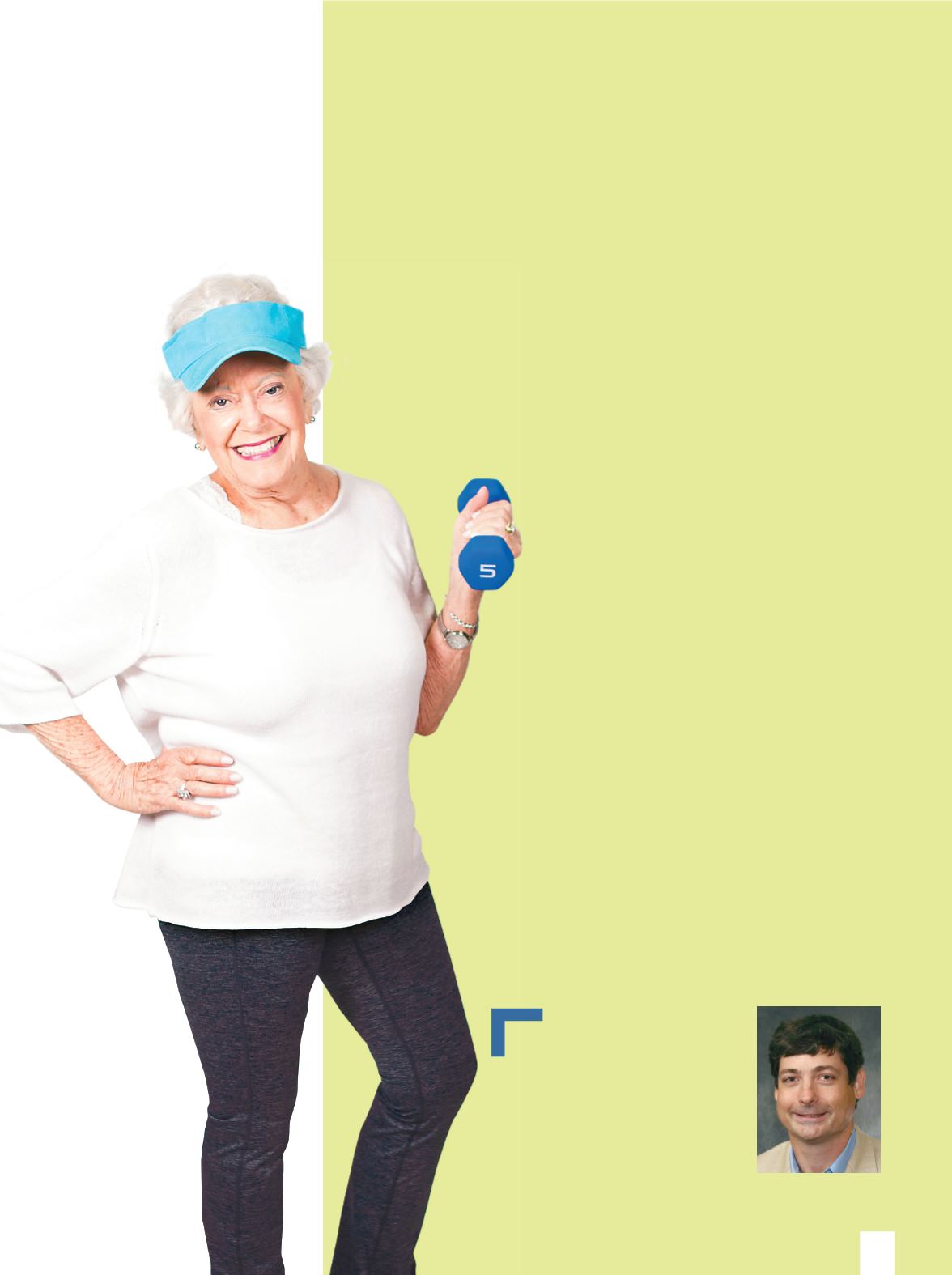

New procedure eases
As you age,
you may notice an increasing amount of pain in your legs when you
walk. If this pain goes away upon sitting or is accompanied by tingling or numbness
that begins in the lower back and radiates to the buttocks and legs, you may suffer
from a condition called lumbar spinal stenosis (LSS) and neurogenic claudication.
LSS is a narrowing of the spinal canal, causing compression on the spinal nerves in
the lower back. LSS is most commonly triggered by aging or degenerative arthritis. It
can become quite debilitating for the estimated 400,000 Americans who have it.
Jackson Hospital neurosurgeon Thomas Whisenhunt, MD, PhD, offers a new mini-
mally invasive lumbar decompression (MILD) procedure which provides significant
pain reduction from LSS. The procedure has effectively helped patients increase their
standing and walking time while also restoring mobility.
“The minimally invasive lumbar decompression uses a 1-inch
incision working through a dilation tube to decompress the
nerves that cause back and leg pain and dysfunction,” Dr.
Whisenhunt said. “Through this method, we can do lami-
nectomies to decompress overgrown bone and tissue, as
well as perform diskectomies causing nerve compression.”
Why go minimally invasive?
Dr. Whisenhunt said there are many benefits to the MILD
procedure over a traditional one.
“Benefits are less post-operative pain, less blood loss, less
tissue disruption, lower infection rates, lower complication rates
from spinal fluid leak, faster wound healing and shorter hospital
stay,” he said. “The outcomes for back and leg pain and nerve dys-
function are equivocal to the traditional open procedure.”
Marion, one of Dr. Whisenhunt’s patients, found much-needed relief
from her back pain after the procedure.
“The pain started in the back of my leg, and then it got in my lower
back,” she recalled. “I had suffered a long year of shots and pills and the
whole works, and that’s when I called and made an appointment with
Dr. Whisenhunt. I said ‘Can you help me?’ I was really in a lot of pain,
and he said he knew just what to do.”
After her procedure, Marion was able to get back on her feet, and
to her workouts, with much less pain than before.
“The main thing for me is now I can stand on that one foot and
it doesn’t just kill me,” she said. “I had seen enough doctors and I
knew I needed help. Dr. Whisenhunt inspired my confidence.”
BACK PAIN
Thomas Whisenhunt,
MD, PhD
9
What are your treatment
options for chronic
back pain? Join Thomas
Whisenhunt, MD, PhD,
on Thursday, April 23,
to find out. Turn to
page 15 for details.
Standing strong:
Marion has had
MILD surgery to
get relief from
back pain.

















